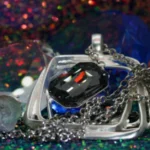In an increasingly technology-driven world, the need for reliable backup power systems is more critical than ever. For businesses, institutions, and individuals relying on sensitive equipment, disruptions in power supply can lead to significant consequences, including data loss, operational downtime, and equipment damage. Seamless backup power conversion systems offer a solution, ensuring that sensitive equipment remains operational during power outages or fluctuations. Here’s an in-depth look at how these systems work and their benefits.
Understanding the Mechanisms of Backup Power Conversion
Backup power conversion refers to the process of maintaining a continuous power supply for essential equipment in the event of a power outage or fluctuation. This process typically involves systems like uninterruptible power supplies (UPS), power inverters, and automatic transfer switches (ATS). These components work together to ensure that sensitive devices receive an uninterrupted flow of electricity. UPS systems kick in immediately when the main power source fails, while power inverters convert stored direct current (DC) energy in batteries into alternating current (AC), which is required by most equipment. Automatic transfer switches facilitate the seamless transition between power sources, ensuring minimal to no downtime.
These mechanisms are vital for protecting equipment that requires consistent power to function correctly. Sensitive electronics, such as medical devices, servers, and manufacturing equipment, can suffer significant damage or loss of data if exposed to even brief power interruptions. By ensuring a seamless flow of power, backup conversion systems mitigate such risks and provide reliable protection.
The Importance of Stable Power for Sensitive Equipment
Sensitive equipment is highly vulnerable to power disturbances, which can cause both immediate and long-term damage. Even brief outages or fluctuations in voltage can result in operational failures, data corruption, or physical damage to delicate components. For example, in healthcare facilities, diagnostic machines, and life-support systems depend on uninterrupted power to safeguard patient safety. Similarly, data centers require continuous power to ensure that servers, databases, and networks remain functional, preventing costly downtime and potential data loss.
Seamless backup power conversion systems ensure that sensitive equipment is protected from these risks by maintaining a steady and reliable power supply. By stabilizing voltage and providing immediate power transfer, these systems enhance equipment reliability and prevent the costly consequences of power interruptions.
Key Features of Effective Backup Power Systems
Modern backup power systems are designed to provide maximum reliability and efficiency. High-speed switching capabilities enable these systems to transfer power sources in milliseconds, ensuring no downtime for connected devices. Voltage regulation features protect sensitive equipment from surges or dips in power, delivering consistent performance. Additionally, these systems often come with scalable configurations, allowing businesses to customize solutions based on their specific power needs.
Another important feature of advanced systems is remote monitoring and management. These tools allow users to track system performance, battery health, and overall energy consumption in real time, providing valuable insights that can help optimize operations. Moreover, many backup power solutions are built with energy efficiency in mind, reducing operational costs while maintaining top-tier performance.
Selecting the Right Backup Power Solution
Choosing the right backup power conversion system depends on several factors, including the type of equipment being protected, the power requirements of the operation, and the environment in which the system will be used. For businesses and institutions, it’s critical to assess the specific energy demands of their sensitive devices. For instance, equipment that handles critical operations, such as hospital monitoring systems or automated manufacturing lines, may require higher capacity systems with extended runtime.
System compatibility is another essential consideration. The output of the backup system must align with the input specifications of the equipment to avoid compatibility issues. Furthermore, runtime duration should be evaluated to ensure that the backup system can sustain operations for the desired length of time. Consulting with experts or exploring professional guidance here can help identify solutions that are tailored to specific needs. That way, you’ll rest assured you’re covered properly.
Benefits of Seamless Backup Power Systems
Investing in a seamless backup power system offers numerous advantages that go beyond immediate power restoration. First and foremost, these systems protect the lifespan of sensitive equipment by reducing the strain caused by inconsistent power supply. Stable energy flow minimizes wear and tear, ensuring that components function efficiently over time. Additionally, uninterrupted operations enhance productivity and eliminate downtime, which is particularly beneficial for industries where time is critical.
For businesses, the financial implications of downtime can be severe. Backup power systems reduce these costs by preventing interruptions that could disrupt production schedules or client interactions. In healthcare, they provide a lifeline for critical medical devices, ensuring patient safety during emergencies. For individuals and small businesses, they offer peace of mind that essential devices will remain operational when needed most.
Applications Across Various Sectors
Seamless backup power conversion systems are indispensable across multiple industries. In the healthcare sector, they are crucial for maintaining the operation of diagnostic machines, ventilators, and other life-saving devices. Data centers rely on these systems to keep servers and networking infrastructure running smoothly, avoiding costly downtime and ensuring business continuity.
In the manufacturing industry, backup power systems ensure that automated machinery and control systems remain operational, preventing costly disruptions to production. Similarly, laboratories and research facilities use these systems to power precision instruments and maintain critical experiments. Each of these applications underscores the importance of reliable power conversion for maintaining operational integrity and safety.
Innovations Driving the Future of Backup Power Conversion
The field of backup power conversion continues to evolve, driven by advancements in technology and a growing emphasis on sustainability. Integration with renewable energy sources, such as solar and wind power, is becoming increasingly common. These hybrid systems not only provide reliable backup power but also contribute to reducing the environmental impact of energy consumption.
Artificial intelligence (AI) and machine learning are also playing a transformative role in backup power management. Predictive analytics enable systems to anticipate potential issues, such as battery failure or energy surges, allowing for proactive maintenance and improved reliability. Compact and modular designs are making backup power systems more adaptable, enabling businesses to scale their solutions as needed without compromising performance.
Seamless backup power conversion systems are essential for protecting sensitive equipment and ensuring uninterrupted operations in today’s energy-reliant world. From safeguarding critical healthcare devices to supporting data center functionality, these systems offer peace of mind and operational continuity. By leveraging modern features and consulting with experts to select the right solutions, businesses and individuals can confidently navigate power challenges and minimize risks. Explore reliable options online to secure the stability and efficiency your operations demand.







